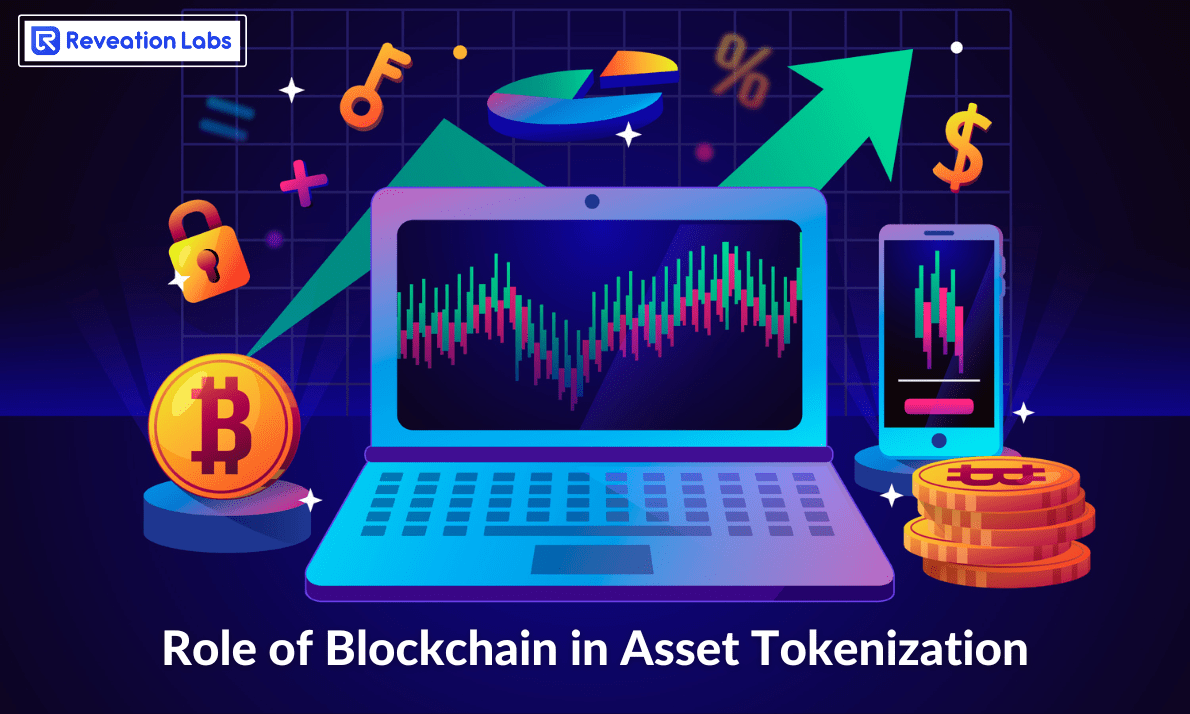Role Of Blockchain In Asset Tokenization

Introduction
Blockchain can make a significant difference in the world of finance. With characteristics such as decentralization, immutability, transparency, and distributed structure, the technology has introduced new benefits and applications into the ecosystem.
One such example is asset tokenization on the blockchain surface. This concept has emerged as one of the top Blockchain technology trends, opening new doors for tokenizing anything and everything in the marketplace, whether it is a diamond, a painting, or real estate.
Let's talk about it in this article, beginning with the basis of tokenization.
Meaning of Tokenization of assets
Tokenization of assets refers to converting the ownership of a physical asset, such as real estate, artwork, or even gold, into digital tokens that can be traded on a blockchain. These tokens represent a share in the ownership of the underlying asset, and their value is derived from the asset's value.
Tokenization allows for the fractionalization of ownership, meaning multiple investors can own a piece of the asset rather than one individual or entity owning the entire asset. This makes it easier for smaller investors to access investment opportunities that would otherwise be out of reach due to high minimum investment requirements.
Tokenization also offers benefits in terms of liquidity and transparency. Because tokens can be traded on a blockchain, investors can buy and sell them easily and quickly without intermediaries like brokers or banks. Additionally, the blockchain provides a transparent and secure record of all transactions, enhancing the process's trustworthiness.
Various Types of Assets Tokenization
There are three types of tokenized assets.
Tokenization of Fungible Assets:
Each tokenized fungible asset is interchangeable and has the same market value and validity. Furthermore, a fungible asset can be divided into an infinite number of decimal points according to the configuration at the time of issuance, with each unit having the same value and validity.
Tokenization of Non-Fungible Assets:
Non-fungible asset tokens are non-transferable and thus cannot be replaced with the same type of token because each represents a different value. These assets are not usually divisible. Each token is distinct from the others of the same type and contains unique information and attributes.
Tangible Asset Tokenization:
Tangible asset tokens are a group of assets that have monetary value in addition to their general availability in physical form.
Importance of Tokenization of Assets
Tokenization of assets has become increasingly important due to several benefits it offers, including:
Increased Liquidity:
Tokenization allows for fractional ownership of assets, which means that smaller investors can participate in markets that were previously only accessible to larger investors. This increased participation and liquidity can lead to better price discovery and more efficient markets.
Reduced Costs:
Tokenization eliminates intermediaries like brokers and custodians, which can result in lower transaction costs and fees.
Enhanced Transparency:
The blockchain technology used in tokenization provides a transparent and immutable record of all transactions, which can help to reduce fraud and increase trust in the market.
Improved Accessibility:
Tokenization can make it easier for investors to access new asset classes, such as real estate or art, which may have been previously difficult to invest in due to high minimum investment requirements or lack of access.
Increased Security:
Tokenization can provide increased security through cryptography and distributed ledger technology, which can help reduce the risk of fraud and theft.
Considerations Before Entering the Token Economy
1. Business Plan
When it comes to focusing on being a part of the asset management future, the first decision is to determine the suitable business model based on various factors such as:-
2. Process of Platform Integration
You can use various operating models depending on the business model you choose. This includes deciding the best platform for users to use or collaborate with.
3. Cybersecurity
As cryptocurrencies become more widely used in the business world, the risk of cyberattacks rises. Though distributed ledgers provide a higher level of security through the use of consensus and cryptography mechanisms, there are still some flaws.
As a result, businesses must focus on incorporating appropriate security measures into the tokenizing intellectual property at various levels.
4. Compliance
Business interactions in the token economy are unwavering, quick, and immutable. As a result, it is critical to implement appropriate operational measures that comply with regulations. To implement better operational measures, it is necessary to bring new participants forward, such as KYC utilities and blockchain analytic software vendors.
When the aforementioned factors are considered, tokenizing loans and assets can produce better results. It has the potential to create new opportunities and solutions to existing problems, resulting in a brighter future for asset management.
How does Reveation Labs implement tokenization into your current business model?
At Reveation Labs, we understand that creating and managing tokenized assets that meet your business needs is influenced by various factors. We then devise a strategy and prepare the necessary infrastructure for the tokenization process. Later, we will launch an asset on the blockchain and make it publicly available for various exchanges.
Comments
Post a Comment